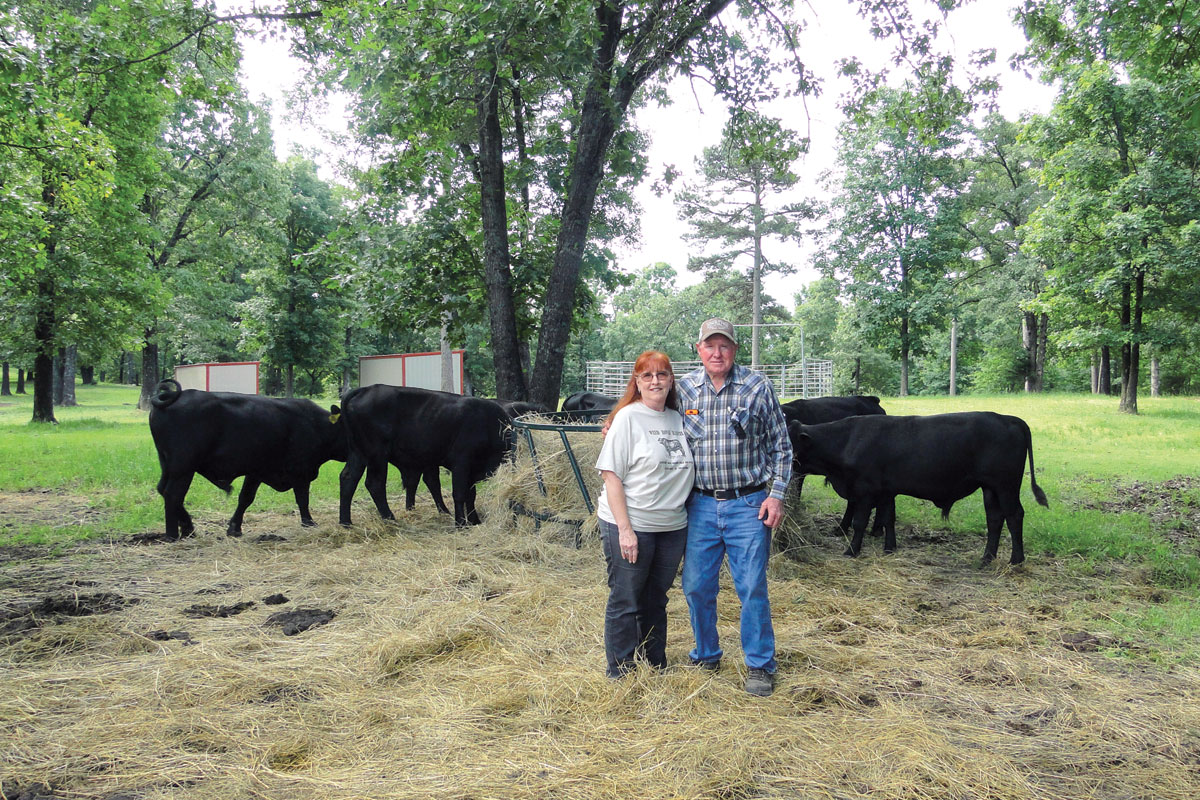
For Jeremy Prater, everything depends on good dirt and good grass.
He’s the third generation of Praters to work Windset Ranch just east of Cedarville, Ark., where he and his father Bill, aunts and grandparents Janice and Larry raise grass fed beef, pastured pork and pastured poultry on 250 acres of Ozark hills.
“We graze about 55 acres with the rest forested,” said Jeremy, who built the house he shares with his wife, Nina, and their soon-to-be-born first child, out of timber harvested from the family homestead and processed on his own private sawmill.
Jeremy uses as many natural processes as he can to ensure the meat and eggs the family sells are of the highest quality possible. He points to the concept of “holistic grazing” which aims to improve the health of the entire ecosystem of a pasture.
“We stopped spraying for weeds, because we really need the worms and dung beetles,” said Jeremy. “It’s very tempting to overdose a pasture to kill weeds, but that kills the microbiology. The grass has really responded. We’ve used no fertilizer in the last eight years, except for manure and compost in the winter time.”
The Praters sell their grass fed and grass-finished beef both directly to local customers and at Squash Blossom Foods in Dora, Okla., and at the Farmer’s Market in Fort Smith, Ark.
“We sell higher than the sale barn up front,” said Jeremy. “But by the time it’s processed and packaged up, it’s just a bit cheaper than the grocery store.” Local customers can visit the farm to inspect and select their beef while it’s still on the hoof. “We try to keep the ride to the processor as short as possible to reduce stress on the animals.”
Jeremy says the connection with the community and the land are important to his customers. “It’s what the customers want,” said Jeremy. “The organic part is important to some, and others want to buy local. They can see the cows, and keep their dollars close to home.”
“A grain fed beef is covered in a white layer of fat,” said Jeremy. “Grass fed is covered with fat, but it’s more yellow because of the beta-carotene. For people worried about their hearts, omega 3’s and 6’s are found in proportion to each other. The great thing about grass fed/finished beef is the O3’s are higher and the O6’s are lower, closer to that in wild game.”
The Large Black and Red Wattle cross pigs raised at Windset Ranch are kept in the pasture, and supplemented with grain. “Rather than commercial breeds, these are so easy on the pasture,” said Jeremy. The meat from pastured pigs is also different from the pork chops usually seen at the grocery store. “It’s relatively lean, but marbled like an Angus steak,” Jeremy said.
Jeremy uses an old house trailer as a moveable coop for around 100 laying hens. “I paid $70 for the trailer, painted it, gutted it, and cut holes in the floor,” said Jeremy. He moves the coop with a tractor along behind the cattle as they rotate through the various pastures. Besides cleaner pastures and well-fed chickens, the Praters reap other benefits from their mobile coop. “We’ve really reduced our face fly issue, and the manure the chickens leave behind is a real fertilizer boost for the grass.”
Jeremy explained that the abundance of natural food and good living conditions for his birds results in large, quality eggs.
To preserve their flocks from coyotes, feral dogs, and other predators, the Praters keep a waist-high electric fence staked around their chicken coop at all times.
“It takes me about 20 minutes total to take down the fence and move the whole thing,” Jeremy said. “I just move them where I need them.”
Jeremy’s grandparents, Janice and Larry used to run a large flock of sheep, but the sheep are giving way to goats. “We’ve got two groups of goats,” said Jeremy. “We’ve got large milk goats and smaller Kiko-Boer cross meat goats. The Kiko are from New Zealand, which has a climate similar to here, and they are very hardy.”
Jeremy grew up in Arkansas, and spent much of his childhood at his grandparents’ farm. But the path that led him to start working the family farm was not a straight line. He studied both photography and anthropology at the University of Tulsa, traveled around Central America, and then spent seven years working as a park ranger in the Alaskan back country. He met his wife Nina, a native of Vermont, while in Alaska.
“We have to have farmers. Nina and I decided to move back and get involved in local agriculture,” said Jeremy. “We wanted to prove that a small farm like this should be able to provide everything you need.”
Jeremy says that the National Resources Conservation Service was key to combining the newer, more organic farming methods and ideas with the long-time traditions of his grandparents.
“What they did for us was bridge the gap between what I was reading and learning and my grandparents’ experience. They gave us a common language and all these resources.”
And the changes have helped the Praters offer quality products, increase their profits and still have time for each other.







